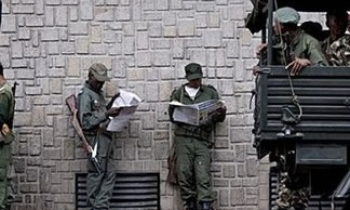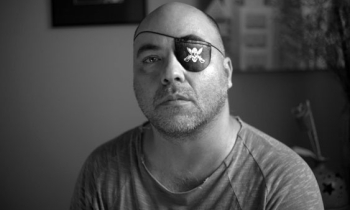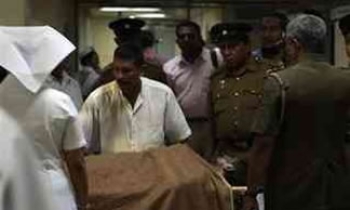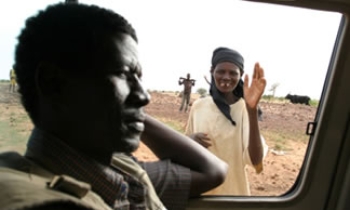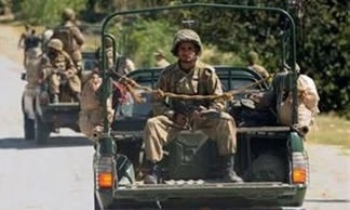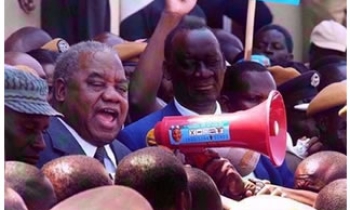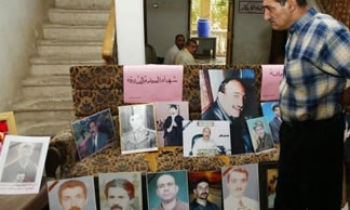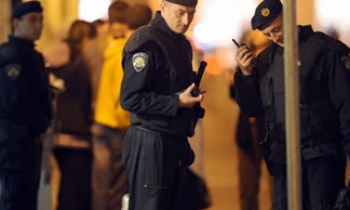Newspapers and television stations, as many people know, have been losing readers and viewers for years. But in New Orleans over the last two weeks, when news was precious, the local media's customer base - and its advertisers - literally vanished, exiled from home in a vast diaspora beyond the reach of telemarketers and ad salesmen.
New Orleans media outlets, including The Times-Picayune and seven television stations making up the nation's 43rd-largest media market, have been left to contemplate a surreal future of unknown duration in a city devoid of functioning businesses, with no goods to advertise and almost no people to buy them. As a plaintive Times-Picayune headline put it Friday, "Few Souls Remain in Shell of a City."
And yet the owners of The Times-Picayune, which had a circulation around 270,000 before Hurricane Katrina struck, and the seven television stations, which served about 670,000 households, were unflinching in their commitment to the deluged city - making plain the difference between the manufacturers of widgets and the gatherers of news.
"We're in this for the long haul," said Terry Mackin, executive vice president of Hearst-Argyle Television, owner of WDSU-TV, the NBC-affiliated station in New Orleans.
Jeff Reiter, a spokesman for the Tribune Company, which owns WGNO-TV, the ABC-affiliated station, said, "We are definitely committed to remaining in this market."
And Donald E. Newhouse, president of Advance Publications, which owns the daily newspaper, said: "To use the words of our publisher, Ashton Phelps Jr., The Times-Picayune will continue to publish. Period. And we will continue to own The Times-Picayune. Period."
For the media outlets of New Orleans, the short-term issue has been to find a way to publish and distribute, to get on the air and stay on the air, while simultaneously covering and being caught up in what may be the biggest natural disaster in the nation's history.
The extent of the physical damage to their plants and stations is unclear. Most have been dislocated and their staff members are working out of temporary newsrooms and studios around the region, barred by flood damage and a lack of electricity from getting back to their desks.
The chaos of the short term has obscured the abyss of the long term, which is only beginning to emerge. As the news media outlets continue to produce, who will be reading them? Who will be watching them? And who will be paying for the substantial additional costs of gathering news during the crisis, which, for television stations, include expenses like renting helicopters?
The Times-Picayune took in an average of $9.2 million a month in ad revenue over the last six months, according to TNS Media Intelligence, part of Taylor Nelson Sofres, which tracks advertising spending. It has obviously lost some revenue, but it is hard at this point to say how much. Insurance companies, banks and area employers have been advertising in increasing numbers. But the newspaper has been able to print only two sections of eight pages each a day, although Jim Amoss, the editor, said he hoped to go to 20 pages.
Before the hurricane, the paper ran an average of 80 pages a day.
The television stations, which collectively took in an average of $7.5 million a month over the last six months, have probably lost a combined $3.7 million in the last two weeks.
The question is how long these outlets, which earn the vast majority of their revenue from advertising, can go without that revenue. New Orleans is looking at months if not years of recovery.
"They have to think of themselves in the short term as operating as public interest entities rather than as commercial entities," said Jon Swallen, director of research at TNS.
"But it still costs money to print your paper or broadcast your television programs, and where is that money going to come from? It's up to the corporate owners to decide how to proceed for how long and at what cost."
Such decisions hinge largely on when the city may become commercially viable again.
"That's a total unknown," said David Barrett, the president of Hearst-Argyle. "Anyone who would suggest they knew the answer to that would be crazy. No one can even hazard a guess."
But Mr. Barrett did hazard a guess as to how long the television stations might operate before advertisers started to return.
"I expect we'll go four weeks or longer with no revenue at the station," he said. "But we still have to meet the role of local broadcasters. We've been doing great local journalism, and we'll continue to. That's what a big broadcast company can do."
The closest analogy for how advertisers can approach the New Orleans market may be World War II, when there was virtually no production of consumer goods like cars and appliances as factories were retooled for military purposes. Many marketers continued to advertise, running patriotic pitches to stimulate sales of war bonds or offering uplifting vistas of a rosy postwar life.
One of the most famous ad campaigns emerged from the 1940's when the Ford Motor Company adopted the forward-looking slogan, "There's a Ford in your future." The only cars in the ads were drawings, inside an illustration of a crystal ball, implicitly giving people hope that peace and prosperity lay ahead.
Sue Johenning, executive vice president and director for local broadcasting at the Initiative media agency in Los Angeles, said surveys the agency conducted after Sept. 11, 2001, showed that at some point consumers want "a return to normalcy, and they see advertising as part of returning to normalcy." She said the surveys also showed "advertisers that provided information and service were looked to favorably."
But New Orleans is too absorbed in the here and now to begin to think about normalcy.
"It's cavalier to do anything in the region unless it's about helping people," said Richard Kirshenbaum, co-chairman of a division of the MDC Corporation, Kirshenbaum Bond & Partners in New York, which operates agencies handling tasks including advertising, media buying and public relations.
"There's a level of appropriateness people ought to follow when the disaster is still in place," he said, likening the situation to the aftermath of 9/11 in the New York region when consumers felt that what they were going through was "too devastating" for anything overtly commercial.
Mary Gerzema, executive vice president and communications planning director at Universal McCann in New York, said advertisers needed to avoid anything that seemed "opportunistic or callous," but that did not mean all advertising should cease. "The key is having something to say that people appreciate hearing and find useful," she said.
For instance, for the Lowe's home-improvement chain, she said, the agency bought commercial time on radio stations or replaced already scheduled spots with new ones discussing how its stores had frozen prices, ordered extra shipments of needed merchandise and made donations to the Red Cross.
Ads in The Times-Picayune have been of a plain, public service nature, with no pictures. The Whitney Bank was one of the first to start advertising again, and its ads have evolved in a span of just a few days. The first ads were titled "Times Like These Call for a Bank Like the Whitney." Its ad in yesterday's paper announced a broad-based hurricane assistance loan for storm victims.
The paper is also seeing a new type of ad appealing to displaced persons. Kleinpeter Farms Dairy of Baton Rouge, La., for example, took out space in the paper to say, "We welcome you, our new neighbors from New Orleans, and if you haven't already done so, we invite you to try our milk."
While advertisers are taking things a day at a time, media owners appear to be basing their determination to stay in New Orleans largely on the pending arrival of billions of dollars in reconstruction aid.
Executives from both Hearst and the Belo Corporation, which owns the CBS affiliate WWL-TV, said they expected the New Orleans market to rebound because reconstruction companies would want to advertise their services on local television. .
"People are going to need rebuilding," said Rick Keilty, senior vice president of Belo, "and if you are in a business that provides that rebuilding, you are going to want to tell people you can provide those services." Mr. Mackin of Hearst-Argyle went so far as to predict an economic boom for stations in New Orleans. "I think we'll see a short-term economic hit and then a long-term boom," he said, citing the billions in government dollars designated for the city.
He said conventional local advertisers, like auto dealers and fast-food restaurants, would be in a position to reap the benefits of federal and charitable dollars - at least that was the experience in places like Orlando and West Palm Beach, Fla., last year in the wake of hurricane damage.
But the short term, all the executives conceded, is a total loss.
"I think it's a fair statement to say the advertising base has been wrecked," Mr. Keilty said. "We're in the process of strategizing how we'll deal with that now."
WWL-TV, the market leader, is the only station that never left the air in New Orleans throughout the crisis, running continuous commercial-free news coverage of the storm and its aftermath. WWL is one of the nation's dominant local stations and is CBS's strongest affiliate in terms of market share for its local news programs, though it is impossible to say how many people are watching it now because without commercials, the stations are not being rated.
But many of WWL's viewers have been relocated well outside the range of the station's broadcast signal, or the local cable systems that routinely carry it. In those cases, New Orleans residents have turned to the Internet for information.
Mr. Keilty said some of WWL's advertisers had already been accommodated with space on the station's Web site, which has been streaming coverage of news developments. He said that one day last week, the site had more than 10.5 million page views. "We're going to be looking more and more to the Web site for advertising revenue," he said.
Similarly, The Times-Picayune established a milestone of sorts by producing its newspaper in a Web version only for three days after the flooding began. On Friday, Sept. 2, it resumed publishing a print version as well, with 50,000 papers at first, then 60,000.
But with its regular readers scattered and with intense worldwide interest in New Orleans, the paper's Web site (nola.com) is poised to become increasingly dominant. It offers not just news but also a missing-persons database and details about neighborhoods from local residents. It is experiencing a heady increase in traffic.
Peter Weinberger, president of Advance Internet, said the paper was getting 26 million page views a day - just about the same number it had been getting a month in the period before the hurricane.
And the number of advertisers, who receive prominent display on the Web, continues to climb.
Mr. Amoss, the editor, said yesterday that the news-to-advertising ratio was now a "very healthy" 50-50 with several full-page ads, many of them in color.

